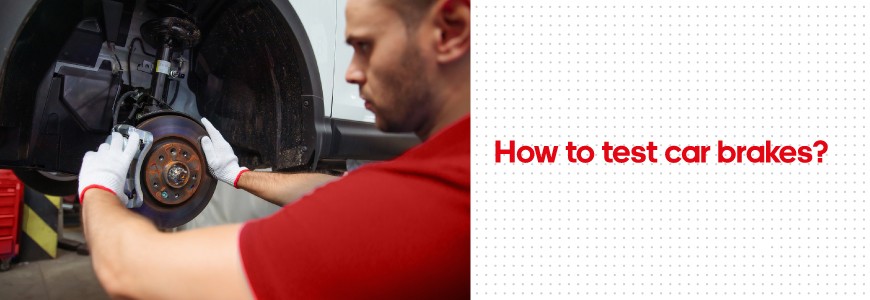
The car owners should maintain the vehicle brake system to keep it in order. The diagnostics of the brake system – the obligatory procedure that has to be made regularly since the slightest brake system defect may lead to the accident.
Brake system malfunctions. What does cause them?
Failure of the brakes is a serious problem. And it’s forbidden to drive a car, if there’s the tiniest suspicion of the brake system malfunctioning.
The following symptoms enable the identification of brake system malfunctions:
When braking, the car is tending to move sideward. This is a result of the seized piston of brake caliper of one of the circuits.
Noises as grinding, squealing when braking. They may be caused by the brake pad/shoe worn to limit, extreme corrosion of brake discs, and sometimes, by the separation of the lining from the brake pad base plate.
The driver puts much more effort when tapping the brakes. It may be the result of a vacuum brake booster failure.
When tapping the brakes, you can feel the vibration that may mean the wear and the deformation of the brake discs, or the brake caliper fastening has been loosened.
There’s no brake pedal free play – due to the incorrect adjustment of the vacuum brake booster during its replacement, or the brake cylinder cuffs plumped because of the poor-quality (faked) brake fluid.
Brake warning light is on. It points at the low level of the brake fluid in the tank under the car hood. Check if any fluid remained under the car after parking. The active indicator may also warn about the excessive wear of the brake pads with the relevant integrated sensors.
Diagnostics: how to check the brakes?
To maintain the brakes, the regular vehicle testing is required. To make the accurate diagnostics and the further proper repair, you should go to the special services car station.
The vehicle brake system is diagnosed as follows:
- Testing of the brakes and pedal travel inside the passenger compartment. Besides, one should check if the parking brake is adjusted properly.
- The inspection of the brake fluid level, cylinders and pipes.
- The inspection of the wheels to exclude the oil leakage.
- The inspection of the brake calipers, hoses, pipes – to exclude the corrosion, damages, deformation and fogging on the surfaces.
- Testing of the brake discs, drums and pads. Once the width of the elements is insufficient, they have to be replaced.
- Testing of the brakes during real driving: measuring of the braking distance and braking deceleration rate. The vehicle travel path should not change during the braking deceleration.
The equipment for the diagnostics of the brake system
MS300 – the most efficient test bench for the brake system diagnostics and repair.
- It can evaluate the performance capacity and tightness of the units; it reveals the brake caliper failures. The test bench enables the diagnostics of the electric parking brake.
- The bench design includes the perforated sidewall convenient for arrangement of the tools required for the disassembling/assembling of the units.
- The test bench is designed for the long-term and intensive operation, and it can be used at car service stations with the high customer traffic.
For more information about the equipment for the diagnostics and repair of the brake system, follow the link or contact us.



COMMENTS